Most Popular
Korean History
-
1
2014 ferry disaster left scars that never healed
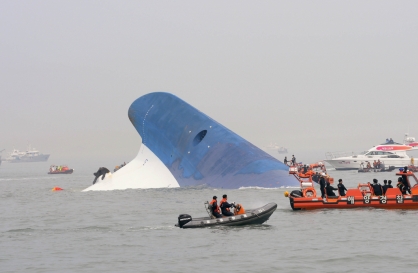
-
2
In 2012, K-pop makes leap from 'Gangnam' to the world

-
3
Deadly sinking of Navy ship in 2010 marks worst postwar military disaster
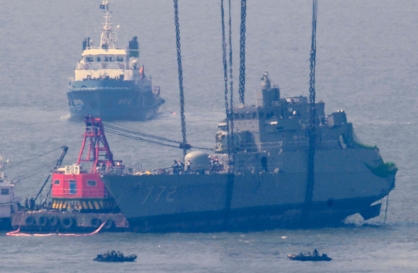
-
4
In 2008, Korea's National Treasure No. 1 went down in flames
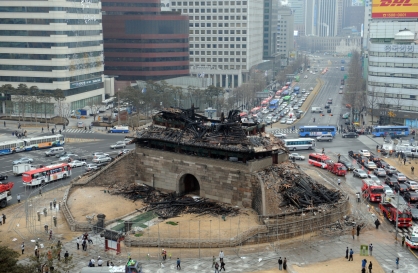
-
5
In 2005, science world’s biggest scandal unravels in Seoul

[Korean History] Deadly sinking of Navy ship in 2010 marks worst postwar military disaster
46 S. Korean Navy personnel killed in torpedo attack by N. Korea; lingering conspiracies suggest alternative causes despite lack of evidence
By Kim So-hyunPublished : Dec. 6, 2023 - 11:09
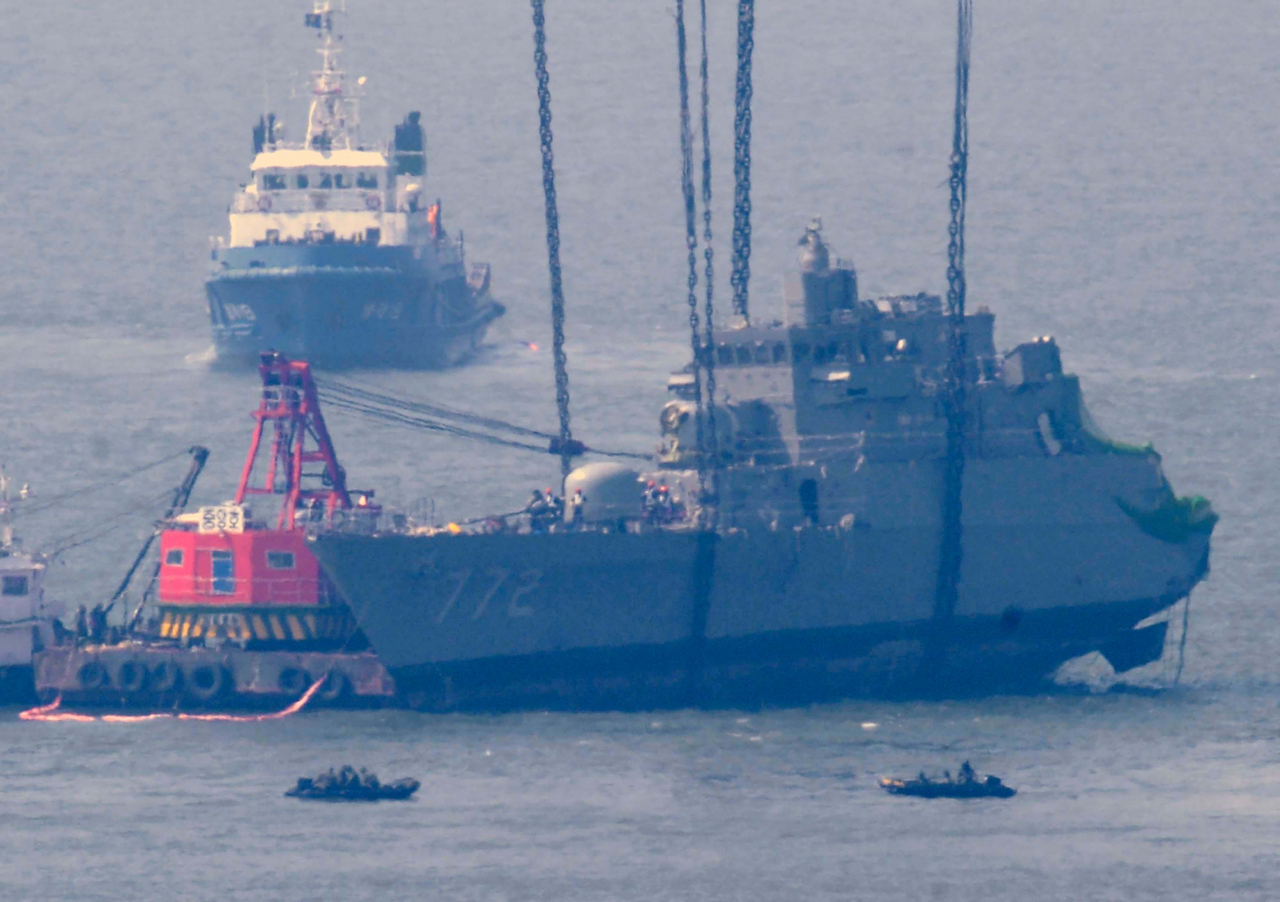
On the night of March 26, 2010, an explosion was heard by crew members on a South Korean Navy corvette which had been patrolling off the country’s west coast near Baengnyeong Island in the West Sea.
Five minutes later, the 1,200-ton Pohang-class patrol ship named the Cheonan was broken in half, and the rear half sunk into the ocean, killing 46 Navy personnel inside.
“I heard a loud bang at 9:22 p.m. that night, with which the ship tilted to the right, and my body was flung up in the air, about 30 centimeters (from the floor),” Choi Won-il, then captain of the Cheonan, said about the moment it happened in multiple interviews including a recent one with the state-run Defense Media Agency.
As he fell down, furniture and other objects in his cabin collapsed on top of him, and he passed out for a minute or two after something hit the back of his head, he said. When he came around, the cabin door was at where the ceiling used to be. Water rushed in and was up to his neck by the time crew members broke the door open with a fire extinguisher, sent down a fire hose for Choi to wrap around his body and pulled him up.
“When I went outside, the ship’s stern had disappeared, and the vessel was broken into two pieces,” he said.
Senior Chief Petty Officer Oh Seong-tak said in a press conference organized by the government with 58 survivors 13 days after the sinking that the sound of the explosion was so loud that he felt pain in his ear, and the lights went out as his body went up in the air.
An official investigation led by South Korea concluded on May 20, 2010, that a North Korean heavyweight torpedo fired by a midget submarine, had detonated a few meters below the hull of the ship, creating a bubble jet that generated a massive shock wave that ripped the ship in two.
According to the Joint Civil-Military Investigation Group consisting of experts from South Korea, the US, the UK, Canada, Australia and Sweden, it was a North Korean-manufactured CHT-02D torpedo, of which considerable parts were recovered.
North Korea, as it has with past attacks on South Koreans, denied its involvement.
Condemning the deadliest military attack by the North since the 1950-53 Korean War, the South’s Lee Myung-bak administration imposed a set of sanctions on May 24 that year that banned South Korean visits to North Korea; halted all inter-Korean trade and aid projects; prohibited South Koreans’ business expansion in the North and North Korean ships from sailing in South Korean waters.
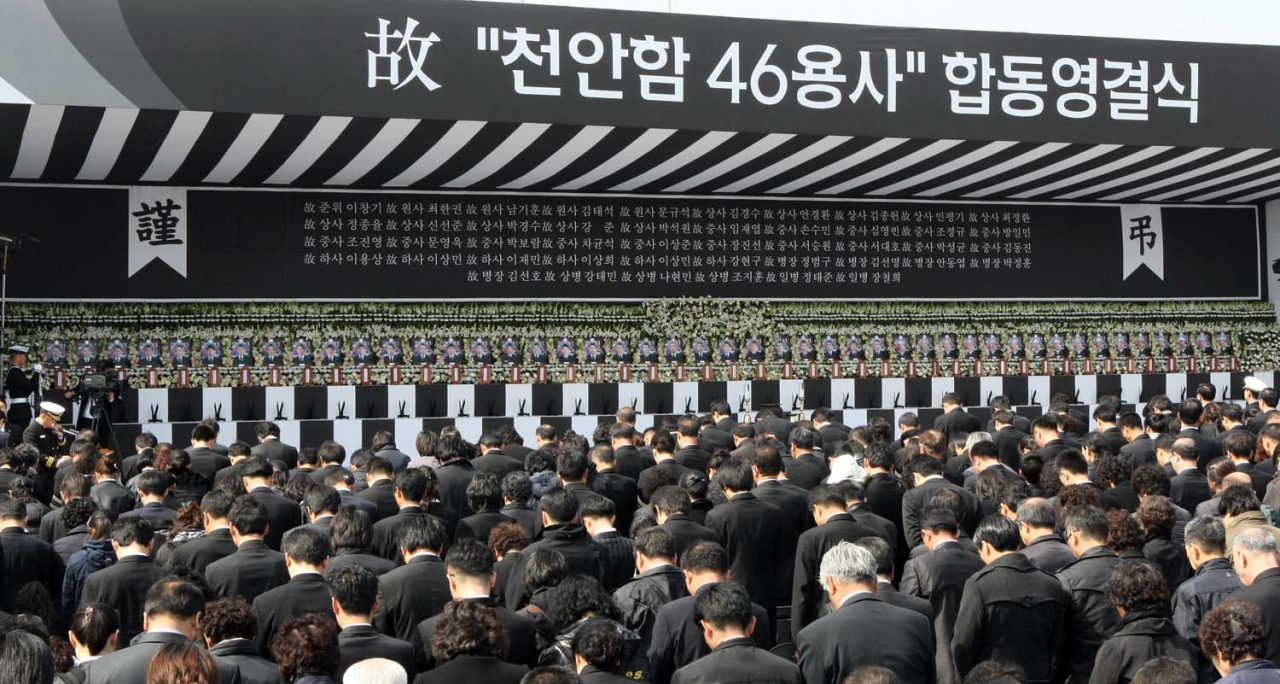
Disputed maritime border
The Cheonan sank just about 1.9 kilometers off the coast of Baengnyeong Island, South Korea’s northernmost island in the West Sea. The island is located to the south and west of the Northern Limit Line, the disputed maritime demarcation line between South and North Koreas.
Since the 1970s, North Korea has engaged in military provocations along the NLL. Naval skirmishes between the two Koreas’ patrol boats, known as the first and second battles of Yeonpyeong, in 1999 and 2002, occurred off Yeonpyeong Island near the NLL after the North drew up in 1999 its own maritime demarcation line further south to include valuable fishing grounds within its waters. Neither South Korea nor the United Nations Command accepts it.
In June 1999, North Korean patrol boats and fishing boats repeatedly crossed the NLL, despite the South’s warnings, and provoked South Korean fast boats by bumping and firing at them, only to return home defeated as a gun fight killed dozens of North Koreans. A North Korean torpedo boat was sunk, and five patrol boats were damaged.
Three years later, North Korean vessels crossed the NLL and attacked two South Korean patrol killer medium boats, starting a skirmish that killed six South Korean Navy personnel and many more North Koreans.
In November 2009, an intruding North Korean patrol boat near the South’s Daecheong Island was disabled in an exchange of fire with South Korean Navy vessels that responded promptly under the rules of engagement which were revised after the earlier skirmishes near Yeonpyeong Island.
“It appears the North Koreans attacked the Cheonan in retaliation for its defeat in the Battle of Daecheong,” Choi, the captain, said. The North had vowed to take revenge after its defeat in 2009.
In November 2010, eight months after the corvette was attacked, North Korea fired about 170 artillery shells at Yeonpyeong Island, killing two South Korean civilians, two soldiers and setting houses ablaze. The South retaliated by shelling the gun positions within North Korean territory.
The bombardment of Yeonpyeong marked the North’s first military attack on South Korean territory that took civilian lives since the 1953 armistice. As it had with the sinking of the Cheonan, the international community strongly condemned the North, but Pyongyang claimed that they had fired in response to South Korean firing into the North’s territorial waters. The South’s military had been conducting a regular live-fire drill nearby, but the shots were fired toward the south of the NLL, the South’s then-Defense Minister Kim Tae-young repeatedly said. It was also not a part of the South Korea-US annual Hoguk military exercise, of which Pyongyang had earlier demanded a halt.
Conspiracies
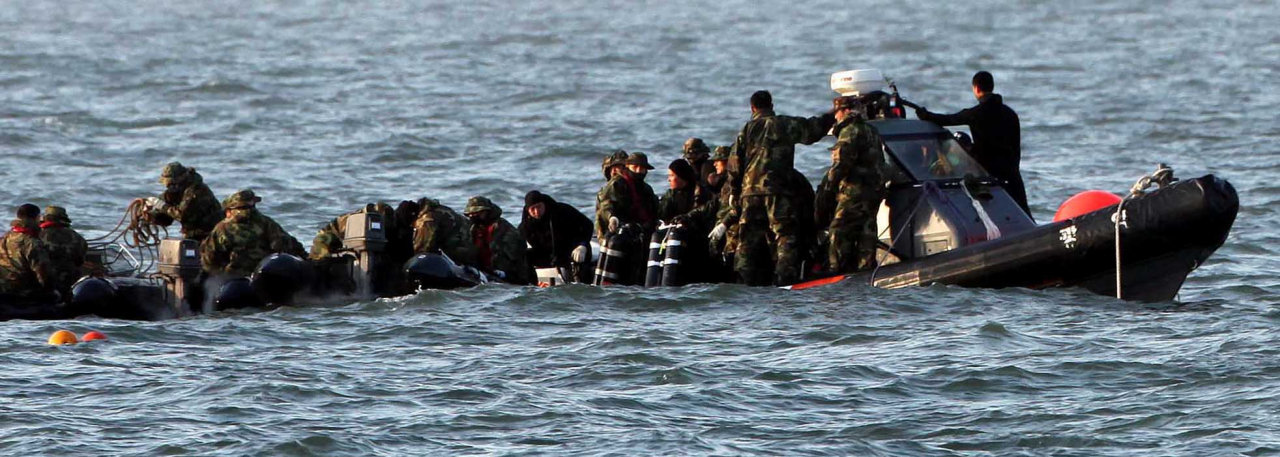
Despite the South Korea-led official investigation results that pointed to Pyongyang as the culprit that attacked the Cheonan, a number of conspiracy theories circulated here over alternative causes of the ship’s sinking.
One was that it had hit a reef.
“The Cheonan could move forward and backward, but it couldn’t move right or left. So if it got stuck in a reef, the bottom of the vessel would have been ripped vertically, but the ship was cut horizontally in the middle,” Choi said, pointing to the wreckage of the Cheonan warship currently displayed at the Korean Navy 2nd Fleet Command in Pyeongtaek, Gyeonggi Province, in a video recently filmed and released by the Defense Media Agency.
Had it run aground over a reef, the sonar dome at the bow of the ship -- a protective cover for sonar equipment on surface war ships -- would have been damaged, according to Choi, but it remains intact.
Choi added that the Cheonan had navigated hundreds of times in that area, which was free of reefs.
Along with many other naval experts, the captain also denied speculation of a collision with an Israeli or other foreign submarine, saying that no surface vessel has ever been broken into two pieces by clashing with a submarine. The Israeli government has also officially stated that it doesn’t have a nuclear-powered submarine, and that its submarines never went near the Korean Peninsula.
Theories suggesting an internal explosion within the Cheonan have also easily been debunked as the steel sheets on the bottom of the vessel were bent inward. Had there been an explosion inside the ship, the sheets would have been bent outward.
There were attempts under the Moon Jae-in administration in 2020 to launch a reinvestigation of what caused the ship’s sinking, but they fell through due to criticism and claims that it would constitute "defamation" of the survivors and bereaved families.
“People who raised questions failed to present proof that could overturn the Joint Civil-Military Investigation Group’s conclusion,” Yang Moo-jin, professor and president of the University of North Korean Studies in Seoul, told The Korea Herald.
"History has shown that when antagonistic and confrontational inter-Korean relations continue, disasters like the Cheonan can always happen.”
























![[Today’s K-pop] Treasure to publish magazine for debut anniversary](http://res.heraldm.com/phpwas/restmb_idxmake.php?idx=642&simg=/content/image/2024/07/26/20240726050551_0.jpg&u=)